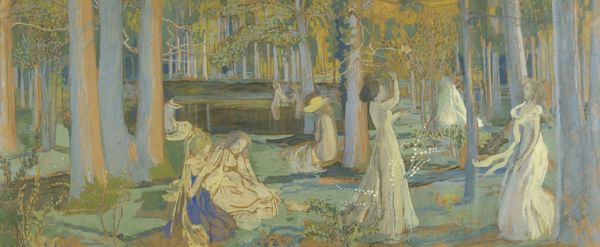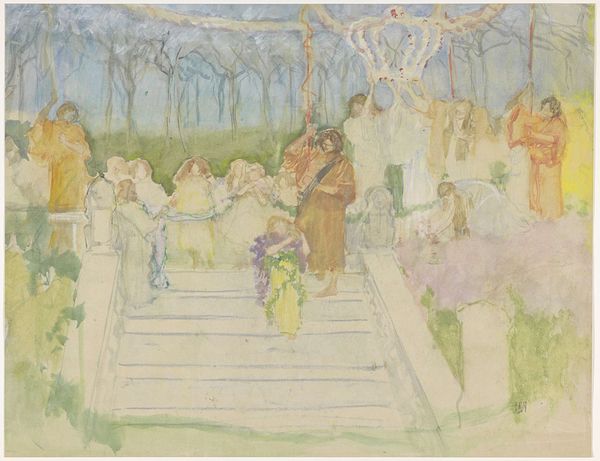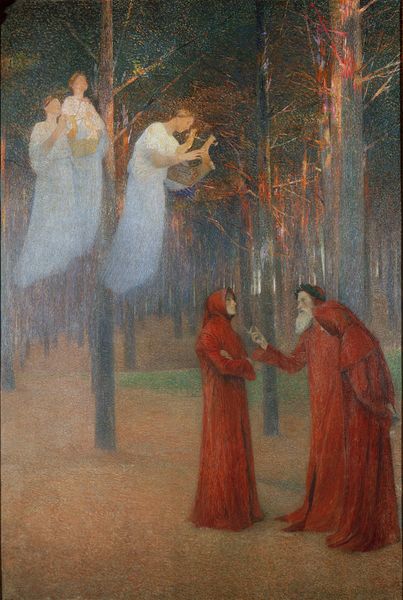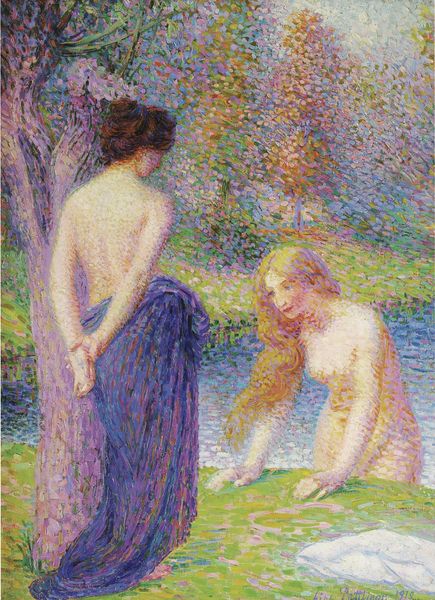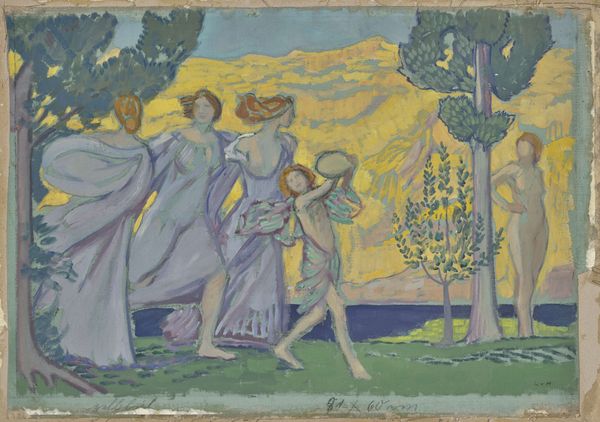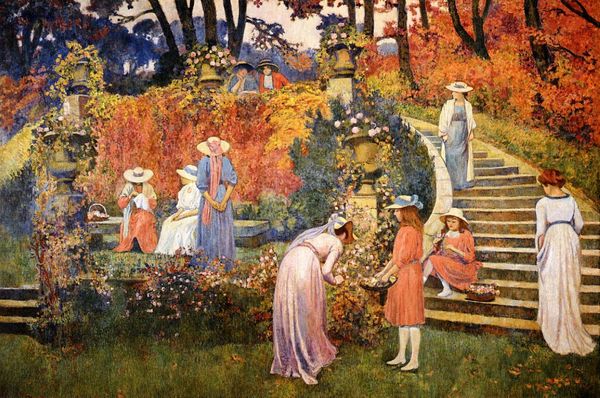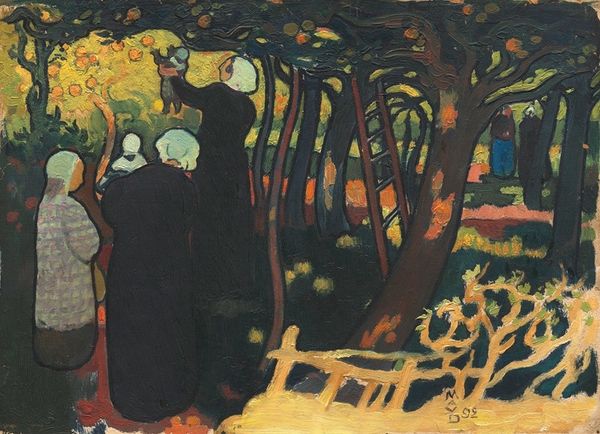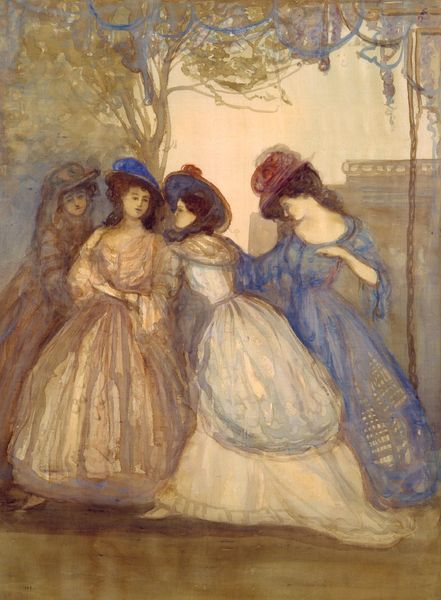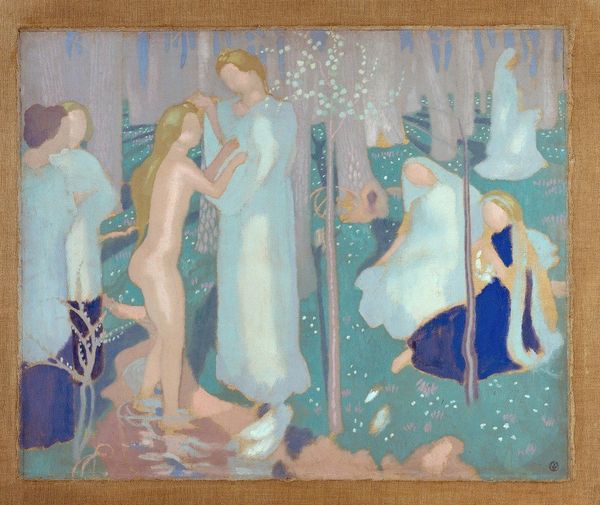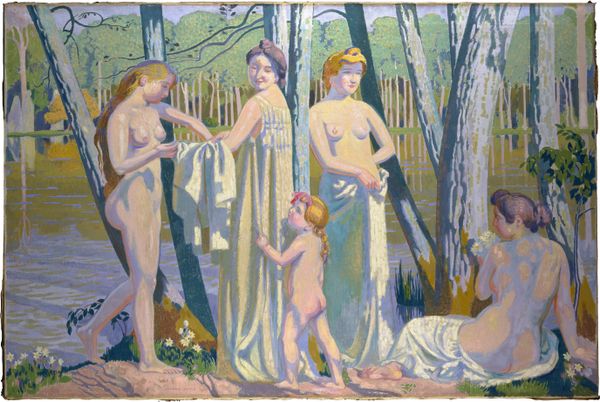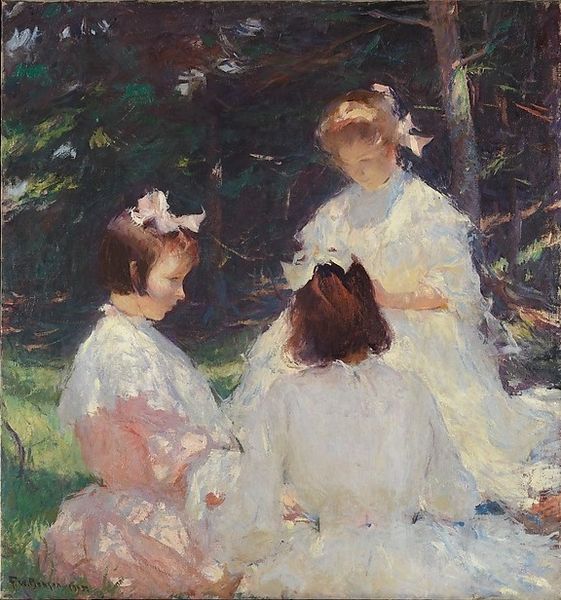
painting, gouache
#
gouache
#
painting
#
gouache
#
landscape
#
figuration
#
female-nude
#
les-nabis
#
symbolism
#
nude
Copyright: Public domain
Curator: Standing before us is "Figures In A Spring Landscape," a gouache painting by Maurice Denis, completed in 1897. The work is currently held in a private collection. Editor: It's like a dream, a washed-out memory. The figures almost dissolve into the landscape, and the palette feels muted, fragile even. Curator: Denis was a key figure in Les Nabis, a group of Post-Impressionist avant-garde artists. This piece exemplifies their departure from Impressionism, emphasizing spiritual expression and symbolic representation over realistic depiction. Note how the medium of gouache, lends itself to flat planes of color. This isn't about creating depth, but conveying a mood. Editor: Absolutely. There’s a deliberate blurring of boundaries here—between the nude female form and the surrounding nature. This seems ripe for feminist interpretation, potentially linking feminine identity with cycles of renewal. Were these women bourgeois subjects? Does this painting subtly grapple with contemporary notions of female freedom versus confinement within the patriarchal gaze? Curator: I'm particularly drawn to the tactile nature of the gouache itself, applied in thin layers. Look closely, you can almost see the brushstrokes building up the image. Consider, too, the choice of a private collection; the work has changed hands many times as the social values of what is collectible changed as well. It prompts thoughts on accessibility, and questions who historically has controlled ownership. Editor: And let's not overlook the composition. Three women, seemingly at leisure in a blooming landscape—there's an overt sense of idealized femininity present here, juxtaposed with raw nature that must have served a societal role during Denis' time and in the era following the works debut. The setting might seem like the escape hatch from contemporary anxieties during the Industrial Revolution and subsequent early, stifling conventions of feminism. How should these artistic representations contribute to current dialogues around the body and landscape? Curator: Perhaps it is useful that "Figures in a Spring Landscape" can only be viewed at select private exhibitions, in an art climate rife with images—so often seen on our mobile devices. I am intrigued how time continues to influence art appreciation in its presentation to society. Editor: A valuable point. It brings us back to those questions of representation, context, and access. Thank you.
Comments
No comments
Be the first to comment and join the conversation on the ultimate creative platform.
